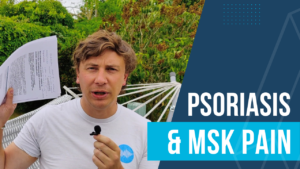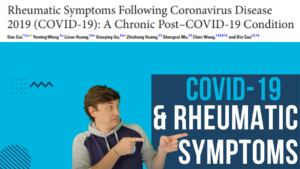Welcome back to the blog! Feet, what are they and what do they do? An eternal question asked about the leg-hands. In cases of Spondyloarthritis feet are commonly affected in various ways and understanding the nuance is necessary.
The recurrent features are back with legend of the blog and music from Good Charlotte at the bottom of the page.
Please consider heading to the shop to find more resources and supporting me to continue this hairbrained project! Or you can Buy A Coffee
You can also listen to all of my blogs as podcasts subscribe to your preferred channel HERE You can also find my podcast on Apple & Spotify & Google
As usual feedback is greatly appreciated and any further reading for me please send it my way!
PLEASE REMEMBER – THIS BLOG IS NOT A REPLACEMENT FOR CLINICAL REASONING, IF YOU ARE UNSURE GET ADVICE
Legend of the Blog this week is Mehmet Gem who had the privaledge of working with me at Nuffield Health but is also an all around legend on everything hips! Follow him on twitter and go on his courses if you can manage to get a place!
Spondyloarthritis
Firstly lets just remind ourselves that Spondyloarthritis is an umbrella term which can be broadly split into pre-dominantly axial symptoms and pre-dominantly peripheral symptoms (more HERE). In pre-dominantly axial disese the most likely peripheral location to get symptoms is the heel – achilles/plantar fascia insertion and in pre-dominantly peripheral disease the most common location to get enthesitis is the achilles/plantar fascia. Add to this that the MTPJs are as commonly affected as the MCPJs with arthritis then the feet can’t be ignored.
Ouchy Feet
As mentioned above, in spondyloarthritis the feet are highly likely to be symptomatic over the course of the disease. This will clearly have impacts on function like walking, exercising and so on. Most people are not compelled to go for a run or similar when the heels andor toes hurt when they wake up in the morning. What we dont really know is anything further than this.
Ankylosing Spondylitis/radiographic Axial Spondyloarthritis is famed for causing structural change to the axial skeleton, fusion of the SIJs and bamboo spine (named because it makes the vertebrae fuse and look like bamboo plant segments). The fear then is that this may happen elsewhere in the body affected by the inflammatory process. This study was published recently attempted to look at this but was flawed in a number of ways and I don’t think it really adds anything to our knowledge base.
Management
Surely we know how to manage these feet then right! Well, actually no. The study above hints at managing foot posture as a good idea but I think we are way off that as an evidence based solution. I spoke to Paul Kirwan at Therapy Live about Rheumatological tendons and we don’t have any evidence to load them either. As far as the two of us are aware we haven’t seen any reserch into loading as a treatment approach.
Optimising medical treatment is a good option but sometimes it can seem like bringing the heavy artillery. It isn’t ideal to leave these people to it either.
I have found the following things useful in different amounts depending on the individual
- offloading the heel using a wedge, cushion or insole. I try to use these purely for aggravating activities rather than as a blanket change. Be careful to explain what these are for – short term offloading, they are not really a solution.
- loading the achilles/plantarfascia. I have had some success with isometrics, eccentrics, heavy and so on. Try to pay close attention to the way the tendon symptoms react, especially with regards to inflammatory patterns such as night pain, early morning pain/stiffness and worsening after rest. We do not want these to significantly increase
- self applied cold/heat. In some people this can help to ease the symptoms a little faster, some trial and error needed
- load management. discussing both underloading (extended periods of rest) and over loading activities and moderating these can help quite nicely. Not staying still for too long can often be overlooked. This comes in highly variable amounts with individuals.
- graded exposure to increasing activity (or inactivity) – what it says on the tin
If anyone has research that looks at the “non-medical” management of the Spondyloarthritic foot PLEASE send it to me (and probably Paul). In the meantime, I hope the above has provided some options to trial!
Check out the courses page for upcoming events or use the contact form to contact me if you would like your department to book me!
Music Choice: Good Charlotte – “The River”
“I’ve seen enough now
To know that beautiful things don’t always stay that way
I’ve done enough now
To know this beautiful place isn’t everything they say”


